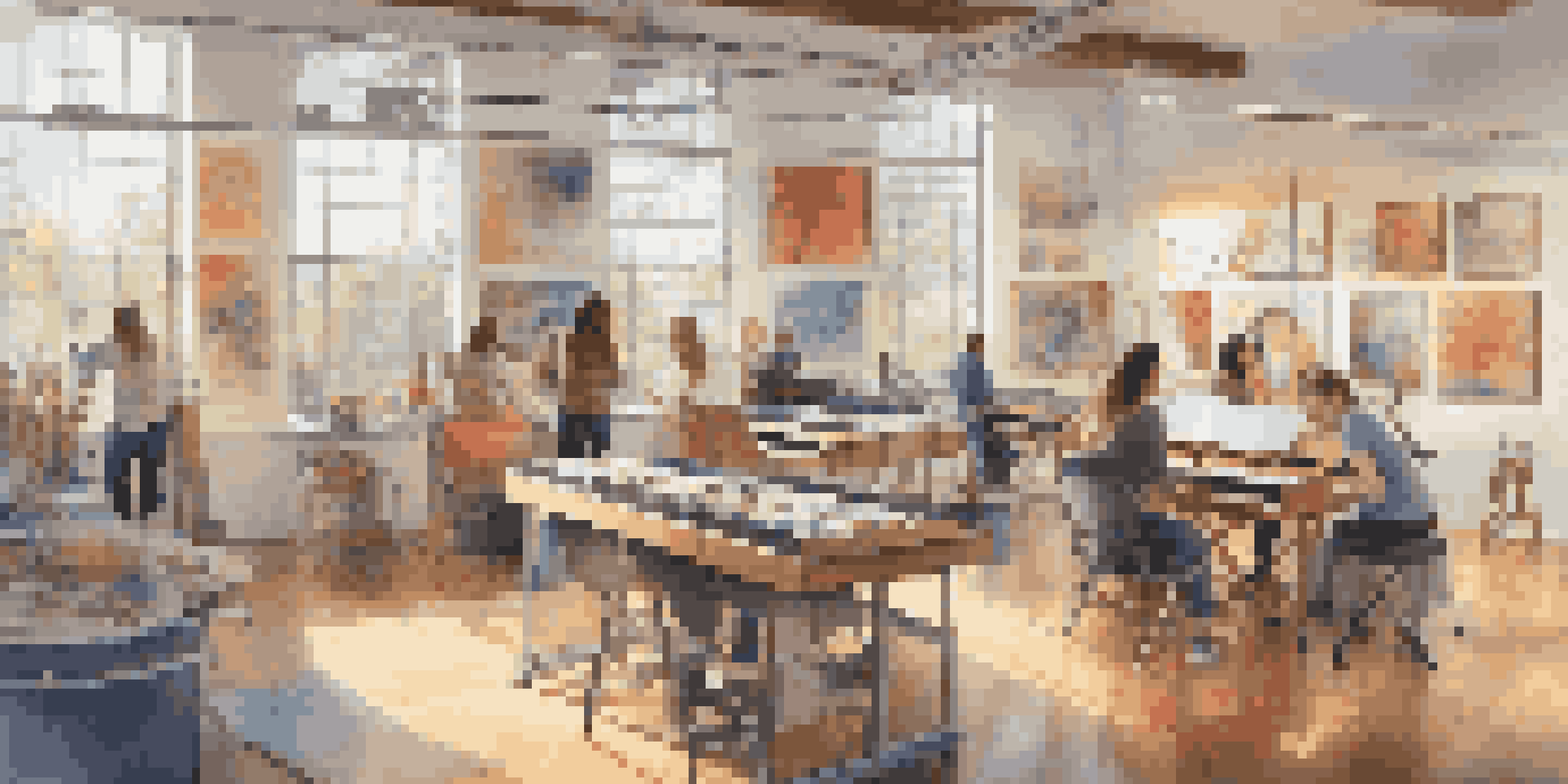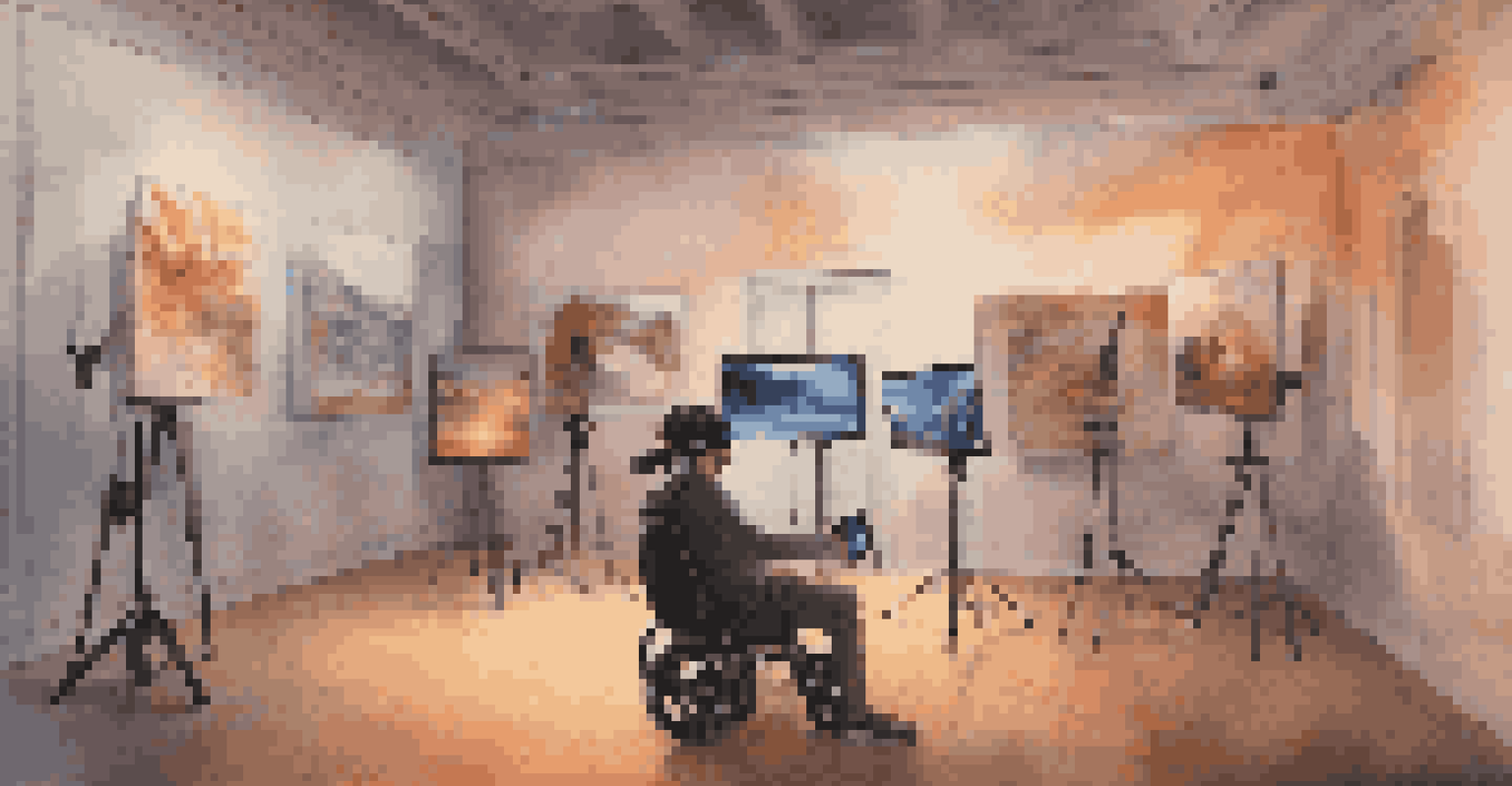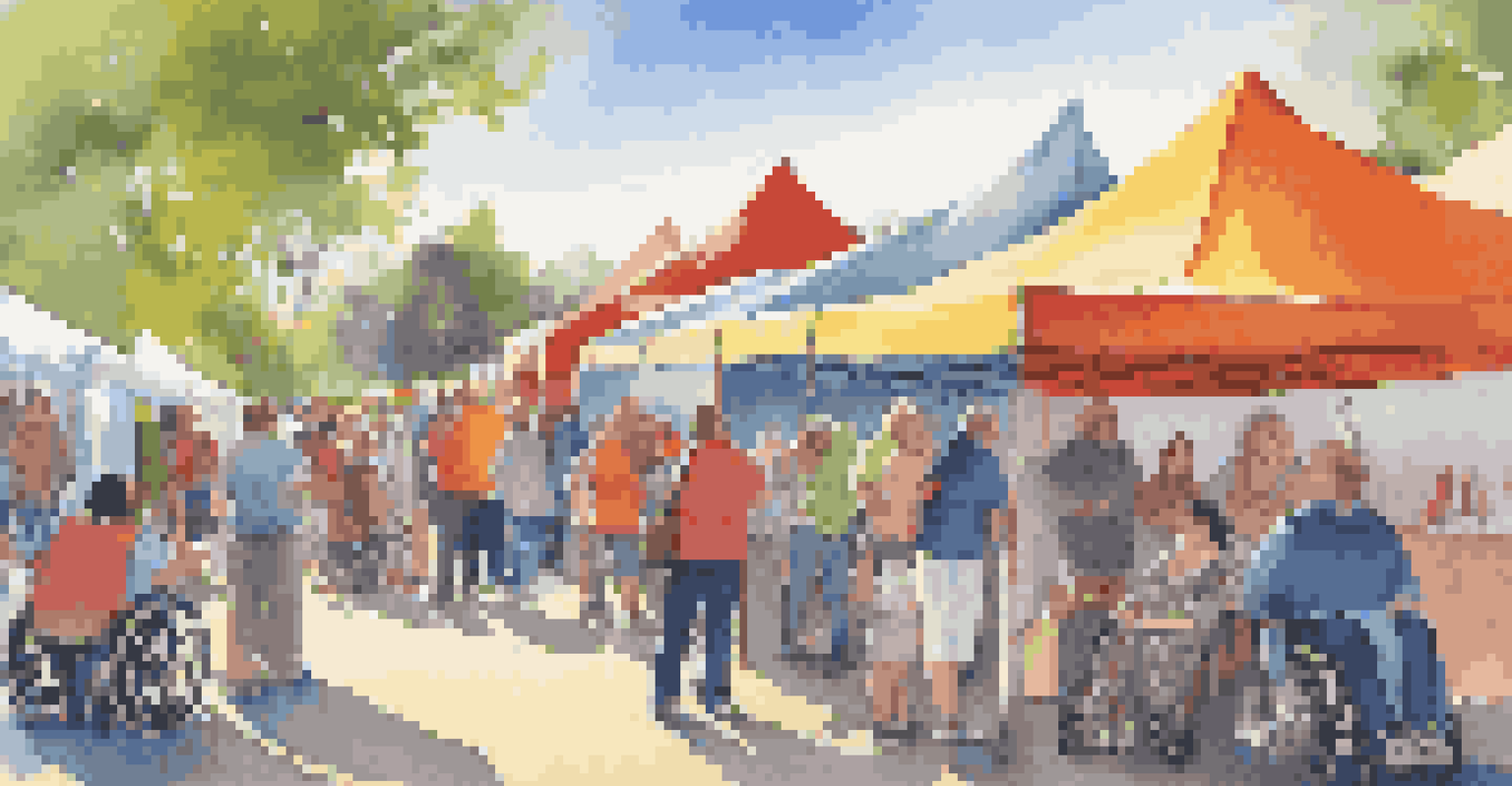Disability and Technology: The Future of Art Representation

Understanding the Intersection of Disability and Art
Art has always been a powerful medium for expression, yet access can be challenging for individuals with disabilities. Understanding the intersection of disability and art is essential for fostering inclusivity. By examining how artists with disabilities create and interact with art, we can appreciate diverse perspectives that enrich the cultural landscape.
Art enables us to find ourselves and lose ourselves at the same time.
This exploration is not just about access; it's about representation. When artists with disabilities share their experiences, they challenge societal norms and broaden our understanding of creativity. Their unique viewpoints can lead to innovations that benefit not only the artists but also the audience.
As we delve deeper into this topic, it's clear that embracing diversity in art can lead to a richer narrative. This shift encourages us to rethink what art is and who gets to create it. With technology as a partner, we can pave the way for more inclusive art experiences.
The Role of Technology in Enhancing Accessibility
Technology has revolutionized the way we experience art, especially for those with disabilities. From screen readers to specialized software, various tools enable individuals to engage with art in meaningful ways. This tech-driven approach creates opportunities for everyone, regardless of their physical or cognitive abilities.

For instance, virtual reality (VR) can transport users to art galleries and museums without leaving their homes. This immersive experience allows individuals with mobility challenges to explore spaces that may otherwise be inaccessible. Such technological advancements are not just conveniences; they are essential for equitable access to cultural experiences.
Art and Disability: A Powerful Union
The intersection of disability and art fosters inclusivity, enabling diverse perspectives to enrich the cultural landscape.
Moreover, assistive technologies are constantly evolving, offering new ways for artists with disabilities to create and showcase their work. By integrating these tools into their artistic practices, they can transcend traditional barriers and express their creativity in ways that resonate with a wider audience.
Innovative Tools Empowering Artists with Disabilities
A variety of innovative tools are emerging that empower artists with disabilities to express themselves fully. For example, adaptive instruments and software allow musicians with physical limitations to create music in new ways. This innovation not only showcases their talent but also inspires others to rethink the notion of artistic ability.
The beauty of art is that it transcends all barriers, connecting us through shared experiences and emotions.
Additionally, digital art platforms enable visual artists to create stunning works regardless of their physical constraints. These platforms often come equipped with features like voice commands, which can facilitate the creative process for those with limited mobility. The possibilities are endless when artists have the right tools at their disposal.
These advancements not only benefit individual artists but also cultivate a more inclusive art community. By promoting accessibility, we encourage collaboration and shared creative experiences that transcend traditional boundaries.
Showcasing Diverse Narratives Through Technology
The integration of technology in art allows for diverse narratives to be shared and celebrated. Artists with disabilities often bring unique stories to their work, shedding light on experiences that might otherwise go unnoticed. By leveraging platforms like social media, these artists can reach global audiences and foster empathy through their art.
For instance, online exhibitions and virtual galleries provide spaces for artists with disabilities to showcase their work without the constraints of physical locations. This democratization of art not only amplifies their voices but also enriches the cultural dialogue around disability and creativity. It's a powerful reminder that art can be a catalyst for change.
Technology Enhances Art Accessibility
Innovative technologies like VR and assistive tools are transforming the way individuals with disabilities engage with and create art.
As we continue to embrace technology, we open doors to new narratives that challenge societal perceptions of disability. This shift encourages audiences to engage with art on a deeper level, fostering understanding and appreciation for the diverse experiences represented.
The Importance of Community and Collaboration
Community plays a vital role in supporting artists with disabilities. Collaborative projects and initiatives can provide essential resources, mentorship, and platforms for these artists to thrive. By fostering a sense of belonging, we create an environment where creativity can flourish.
For example, art collectives that focus on inclusivity often bring together artists with varying abilities, encouraging shared learning and collaboration. These spaces can serve as incubators for innovative ideas and techniques, leading to groundbreaking work that challenges traditional notions of art.
Moreover, collaboration can extend beyond artists to include technologists and curators who share a commitment to accessibility. When different perspectives come together, they can create art experiences that resonate with a broader audience while ensuring that everyone feels represented and valued.
Addressing Challenges in Art Representation
Despite the progress made in technology and inclusivity, challenges still exist in art representation for individuals with disabilities. Access to resources, funding, and visibility can be significant hurdles for many artists. Addressing these challenges is crucial to ensuring that the art world is truly inclusive.
For instance, many galleries and institutions are still grappling with how to adapt their spaces and practices to better accommodate artists and audiences with disabilities. This gap in understanding can perpetuate barriers that hinder creative expression. By advocating for change, we can work towards a more equitable landscape.
Community Drives Inclusive Art Growth
Collaboration within communities supports artists with disabilities, providing them with essential resources and opportunities to thrive.
Additionally, ongoing conversations about representation in the art world are necessary to challenge stereotypes and biases. By elevating the voices of artists with disabilities, we can shift perceptions and inspire broader acceptance of diverse artistic expressions.
The Future Landscape of Art and Disability
As we look toward the future, the relationship between technology and art representation for individuals with disabilities is likely to evolve dramatically. With advancements in artificial intelligence and augmented reality, we can anticipate new tools and platforms that will enhance accessibility and creativity. This evolution presents exciting possibilities for artists and audiences alike.
Furthermore, the ongoing push for inclusivity in the art world is likely to gain momentum. As society becomes more aware of the importance of representation, we can expect to see more initiatives aimed at supporting artists with disabilities. This cultural shift will not only benefit individual artists but will also enrich the artistic landscape as a whole.

Ultimately, the future of art representation for individuals with disabilities is bright. By embracing technology and advocating for inclusivity, we can create a world where everyone has the opportunity to express themselves and contribute to the vibrant tapestry of art.